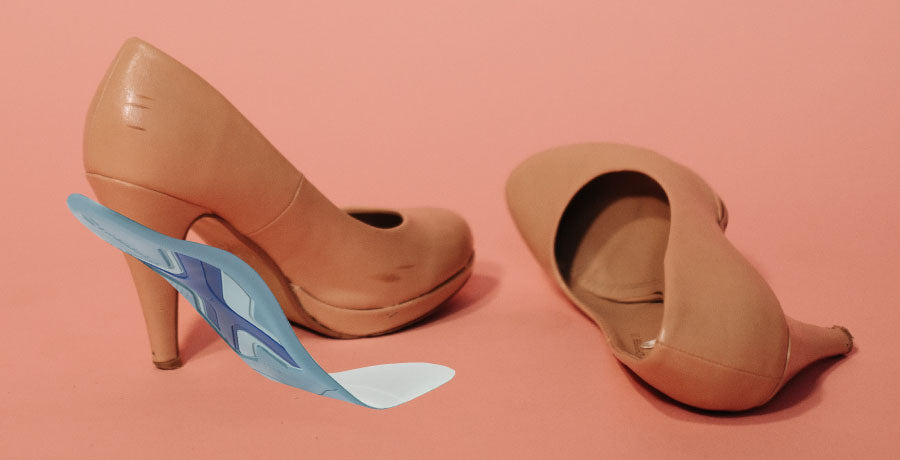Trampoline insoles
Limiting the mobility of the foot causes discomfort. Complaints are often related to other parts of the body, knee, hip, back pain. In conversation with Dr. med. Frank-Detlef Stanek talks about movement mechanisms in the foot and ErgoPad Weightflex insoles.

Dr. med. Frank-Detlef Stanek is an exercise and rehabilitation, sports medicine and chiropractic specialist from Jena, Germany.
Bauerfeind: How often do you diagnose foot joint health problems?
dr. Stanek: About 70-80% of patients have functional problems of the foot bone joints "blockage in the tarsal joints". The term "blockage" refers to the impairment of the hypomobile functions of the joint. In this case, it means that the movements of the joints limit the functionality of the foot. Joint movement is impaired, which leads to impaired rotation of the foot and a pronation shift at the top of the ankle. Compacted foot bones cause movement disorders that affect the function of the toe bones and foot joint.
Most often, patients with this diagnosis are runners, they run on uneven and hard surfaces, experience great stress. Often they are also volleyball and basketball players. The most common complaints are ankle and knee pain. But they are not always athletes, such a diagnosis is also found in people with posture problems or standing for long periods of time.

B: How does this diagnosis affect the quality of life?
dr. Stanek: Very! The functionality of the transverse arch and longitudinal arch of the foot suffers, the movement of the foot from the heel to the toes, as well as the movement is limited or too pronounced.
Deviations and hypermobility occur unconsciously, cushioning decreases, proprioception of the foot, the entire functionality of the foot is disturbed. As a result, the deformation of the knee joint occurs, later it passes to the hip joint, which leads to branching at the level of joint muscles and neurons, as a result of which the joint position and muscle balance change. Foot pain, hip pain, lower back pain, the whole body is affected , body motility changes, neuromuscular coordination.

B: What can we do?
dr. Stanek: First of all, diagnosis is needed - conditions and causes must be defined. Treatment should be initiated based on the diagnosis. Physiotherapy, equalization of load, strengthening of foot muscles, regular foot mobilization. An easy way is exercises with a tennis or golf ball, regularly "rolling" it with the whole foot. Especially at the beginning of the therapy, it is possible that the muscle protection is insufficient, a temporary reduction of the load on the arches of the foot is necessary.

B: How can insoles improve this situation?
dr. Stanek: Insoles provide a passive support function. Ideally, the insole is adapted to the deformation, posture and physical load of the transverse arch and longitudinal arch.
It is important that the insole performs the correction in a balanced way - not too aggressively and not too weakly.
The insole must adapt to the movement of the heels and toes, it must act as a shock absorber. The insole is able to successfully influence the arch of the foot, muscle function and posture.

B: You have been recommending ErgoPad weightflex insoles to your patients for several years, what is your experience?
dr. Stanek: The design of the ErgoPad Weightflex is designed to positively affect the function of the longitudinal and transverse arches. These insoles support the body both during movement and, which is very important, also when standing. Excessive muscle load is reduced, dysfunctional movements of small foot bone joints are less frequent. The insole acts as a springboard - a trampoline, it stimulates the return of the foot bone joints and related structures to their original physiological state.
Different support: ErgoPad Weightflex insoles are available in different degrees of hardness: soft, medium and hard.
B: ErgoPad Weightflex insoles are available in different degrees of hardness, how do you evaluate which option to recommend to the patient?
dr. Stanek: First of all, body weight is important, and secondly, the load. If the load is greater, a person does a lot of sports, walks, stands, - a harder insole core is needed. Hypermobile feet and feet with insufficient muscle tone also need more support - a harder core. A "softer" core is useful for patients with moderate complaints, non-pronounced foot block, with light exercise. According to experience, the "golden mean" (medium hardness insole core) is the best choice.

B: What do patients say?
dr. Stanek: Feedback is positive! For example, women who often wear high heels report a relaxing and liberating effect. Many mention how comfortable the insoles fit into everyday shoes, even the most uncomfortable shoes, making them comfortable. A distinct bonus of ErgoPad is their comfort and the fact that the center of gravity of the foot is not shifted too far up.

ErgoPad Weightflex 2 insoles

- Supports and relieves the foot
- Increases movement control / stability
- Reduces pressure (properly distributes the load)
- Provides foot health prevention
Indications (primary)
- Reduced foot arches (longitudinal arch, transverse arch)
- Flatfoot
Indications (secondary)
- Knee joint / lower back pain
- Hallux valgus (conservative)
- Mild to moderate high arches
- Post-traumatic foot deformities





